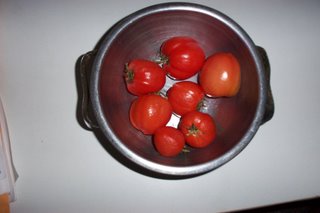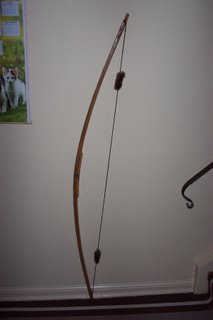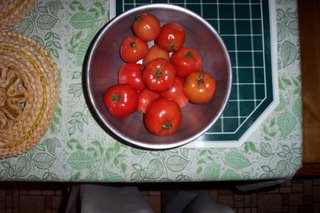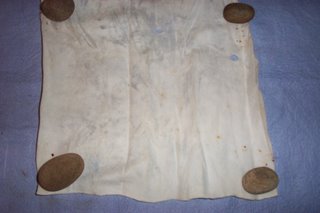
Now that my garden has shut down for the winter with all of the attendent grunt work complete, I decided to continue a previously aborted attempt at leatherworking.
I had decided to embark upon the mystery of leather working last spring, but my attentions were quickly diverted towards the arts of bow-crafting and metal working. Thus, after the consumption of enormous amounts of food over thanksgiving, I clumsily traversed down the basement of my house to fetch several pieces of cleaned rawhide, which had been drying for the last 5 months.
Now animal hides naturally contain high levels of collagen, the elusive protein that tends to make hide twist and contort in many different directions. Obviously we want fabrics to be smooth and pliant, thus more or less fashionable into clothing, containers, shoes...etc. Thus, rawhide needs to be purged of it's collagen, that is, it needs to be tanned. Pre-industrial societies around the planet found several ingenious ways of acheiving this result, none of them are very pleasant to the senses however.
Stone age North American Indian cultures tanned their leather by smearing a paste made of animal brains all over a wet piece of rawhide. Apparently, certain enzymes within brains neutralized the contorting effects of collagens. Europeans of the Middle Ages figured out that the alkaloids within wolf dung did much of the same thing...thus your average middle age tannery consisted of strips of hide being smoked by a dung fire.
And then there's the middle eastern method of tanning. They apparently figured out that the bark of certain trees contained tannins which easily leached out the collagens within rawhide. Unfortunately, the leather thus produced were more than a bit poisonous to eat.
Thus, when all things are considered, I took the middle eastern option. I gathered all the left over maple and oak branches and shrubbery from last week's compost making and boiled them down. To this potion, I added sheets of rawhide. After hours of this boiling, the hard rawhide absorbed the reddish brown tannin elements and became soft and pliable. Drying took hours more.
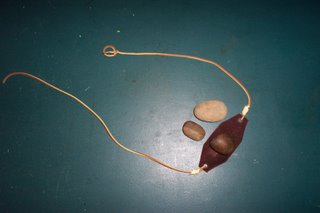
I took a small strip of this leather and quickly fashioned the material into an ancient shepard's sling. The leather was very workable. It was easily cut into the right shape and held it's shape and dimensions with surprising durability. Just playing around with the sling, I managed to easily chuck stream pebbles out to 100 yards with it. The creation of the leather took at least 20 man hours of scraping, cleaning, boiling and drying. But the actual utilization of the material to create a very functional tool/weapon took less than 10 minutes.

